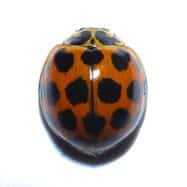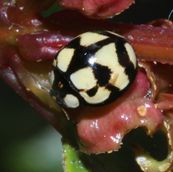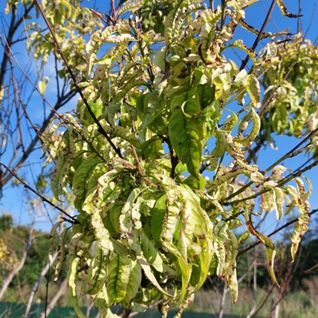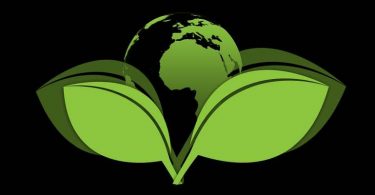New Video from Dr. Radko Tichavsky!
In this video, renowned Agrohomeopath Dr. Radko Tichavsky explains Holohomeopathy, the more advanced method of agrohomeopathy: https://youtu.be/GUUoO6Lt-U8 (English subtitles)
Course: He is now offering a one-semester virtual diploma course in Holohomeopathy (in English). Learn how to analyze holons and how to repertorize the specific homeopathic treatment beyond just disease or pest names. To learn more: www.icomenius.edu.mx Contact: [email protected]
Editor’s Note: JT (Jenichen/Tichavsky) potency is often mentioned in these columns. It is a centesimal dilution followed by 500 succussions or five hundred continuous turns with a wooden stick to the right and 500 turns to the left (if handling larger volumes). The JT potency frequently has a better reaction in plants and it is very important in preparation of live bionosodes.
Hello Dr. Tichavsky,
I have Wooly Aphid on 2 apple trees. I am in Adelaide, South Australia. They were there last year. I sprayed with Coccinella 6x. and there was improvement, as none were found. The tree was then pruned in winter, and re-foliated in spring with no sign of them. I did some summer pruning and the wooly aphids appeared on the wounds first and then spread. I sprayed again with Coccinella 6x with no improvement. There are galls on the branches and we are just coming into spring now.
Thank you for any advice.
Renée Grigg [email protected]
Dr. Radko Tichavsky:
Dear Renée,
Coccinella septempuctata is a good agrohomeopathic remedy, but when we repertorize we must always consider more than one factor, for example, the bioindicators (plants and animals present in the holon), climatic conditions in the holon, conformation of microbiota in the soil.
And the most important: we repertorize and always consider the entire holon as a patient, not only the plant species of economic interest (in this case the apple tree). You must always consider the bioindicators as a whole, which includes the native plants and animals around your apple trees to find the best remedy: the simillimum.
As for the remedy of Coccinella septempunctata (european specie) it does not occur in conditions of low water availability in the holon, as it has relatively little resistance to drought conditions, unlike the woolly aphid whose protective coating makes them resistant to drought). That is, in homeopathic terms, you have applied an incomplete simillimum, which is evidenced by the temporary disappearance of the problem and the reappearance of the same.
In the Australian holon about 90% of the coccinellid species feed on psyllids and not on aphids.There are only very few coccinellids present in Australia that feed on aphids as a second option. Here you are some examples of them:
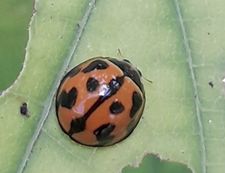
Coelophora inaequalis Harmonia conformis
Phrynocaria gratiosa
The trio of collaboration between ants, aphids and coccinellids has been studied for a long time, but in the case of the woolly aphid this trio in the Australian holon works only partially, and instead a new triangle is formed: Aphelinus mali (wasp parasitoid), Forficula auricularia (Earwigs), Eriosoma lanigerum (woolly aphid). Aphelinus mali lives best in warm conditions which applies to your holon and Forficula auricularia is quite resistant to a wide variety of conditions.
Summarizing, the first remedy applicable on your holon is Auricula auricularia. The remedy should be prepared from a female. You will recognize it because the “earwigs” located on its back are parallel, while in the males they are crosswise.
You prepare a mother tincture for example with a female and 10 ml of alcohol, and prepare the remedy at potency 4 JT sprayed on the trunks and lignified branches and on the soil in the diameter of the tree crown. The woolly apple aphid never attacks the leaves and colonizes the root system, trunk collar and lignified branches.
One application is made after leaf fall of apple trees and another at the beginning of bud break. Aphelinus mali can be obtained in biocontrol organism stores and introduced in physical form. When they settle in your holon they start to act but more importantly they will absorb the specific microbiota of your holon.
Then capture with the help of an old pantyhose some individuals, make a live bionosode, and dynamize it at 4 JT potency (in water without chlorine) and spray it on the trunks of the trees and on the soil.
The “secret” ingredients of woolly aphid control is found in the gut of Aphelinus mali and this is Shewanella spp. bacterias.
Once the Shewanella spp. and metabolically associated bacteria such as Hallomonas, Sphingomonas and Actinobacteria are collected by Aphelinus mali, they come into contact with the microbiota of woolly aphids. This closes the circle of biological control and your trees will not only be free of the parasite but will also acquire systemic resistance to it. You can apply 100 liters of homeopathic remedies for each hectarea.
As an adjuvant control you can use one or two applications of Rhamnus cathartica 12 CH (prepared from the mother tincture of the leaves).
Hello Dr. Tichavsky,
Is the companion planting related to metabolic similarity? Also, is the Dukes Plant Database useful in solving plant problems?
Thank you
Aniruddha Patil
Dr. Radko Tichavsky:
Dear Aniruddha,
Consideration of metabolic similarity of plants, is one of the new discoveries and contributions of holohomeopathy and is used as common practice in holohomeopathy groups throughout the world. It is extremely useful for the selection of homeopathic remedies in agriculture, but it cannot be automatically translated as a suggestion for companion crops, since for plants to function successfully as companion plants they must meet, besides metabolic similarity, other factors for example: root system characteristics, whether they are shrubs trees or herbaceous plants, that they can thrive in the climatic conditions prevailing in your holon among many others.
Metabolic similarity (which facilitates the connectivity of plants with each other, but also of plants with animals, and with macro- meso- and micro-organisms) contains in itself another important factor which is the metabolic complementarity aimed at solving specific association problems for each crop.
That is, there are plants with metabolic similarity that are not good companion plants, but can be excellent remedies with directed action against pathogenic fungi or pathogenic nematodes in plants for example. Others may have the same degree of similarity (number of common metabolites) but be bad companion plants and have different complementary metabolites with a strong bactericidal action in soil for example.
Others may be good companion plants or intercropping plants for example, but without fighting a specific pathogen but useful for harboring phosphorus or potassium availability and nitrogen fixing or heavy metal chelating microorganisms.
In each case it is not possible to speak about ideal companion plants for a plant species only on the basis of the metabolic similarity for every holon. It is necessary to study and repertorize the collaborating organisms in each holon in particular, and to decide on the convenience of using them either in the form of homeopathy, live bionosode, in different potencies or in the form of physical presence of the organism in the holon (as a companion plant).
Good morning Dr. Tichavsky,
Here in the south of England we have a large Cherry tree and it has been infested with what I think is Drosophilia. The climate here is temperate and rains often, but we have had a very dry summer this year.
Thank you
Sonia Ashby [email protected]
Dr. Radko Tichavsky:
Dear Sonia,
Drosophila sp. is a pest of easy proliferation in Cherry Trees. It has the possibility to proliferate in a wide range of temperatures from 5 to 35 degrees Celsius and is generally favored by humidity between 30% to 60% and can destroy up to 70% of fruits.
The key to its control is when color break of fruits occurs, i.e. when the fruit is straw-colored in cherry trees and turns red. From this moment on, the adults of the insect reproduce every 7-10 days and the cycle repeats itself.
The first suggestion is to keep a more pronounced cut of the native ground cover plants during the critical period of ripening of the cherry trees since Drosophila sp. takes advantage of the higher humidity between them to reproduce and later oviposit and develop the larvae in the fruit.
On the other hand, it is necessary to place traps in the form of bottles with a mixture of apple cider vinegar, red wine and molasses, to reduce the number of adults in the holon.
As a repellent remedy and at the same time that decreases the oviposition of the females, we use octenol, a substance found in the leaves of Viola odorata. A mother tincture of the leaves is prepared and applied in potency 4 CH on the fruits of the cherry tree.
Menthol and menthone are also very active substances as repellents of Drosophila spp. A homeopathic preparation of the essential oil of thyme (Thymus vulgaris) is used at 6 CH potency and it not only repels the females but also produces a high mortality among them.
A complementary action should be the destruction of the fruits once the harvest is finished, whether they have fallen to the ground or still remain on the plant, since they still contain the larvae.
The fruit is collected in piles and covered with black plastic in sunny conditions to raise the temperature and eliminate the larvae.
Once the harvest is finished, Azadirachta indica (prepared from the essential oil of the neem tree) should be applied at 4 JT potency on the trees and on the soil, using approximately 50 liters per hectare.
Dear Dr Tichavsky,
I was wondering how to get rid of the invasive plant Tradescantia zebrina. It’s all over my back yard and on the banks of most of our waterways. I want to get rid of it using homeopathy of course. I live in Macleod Melbourne Victoria Australia, where we have a temperate oceanic climate.
Thank you
Ingrid
Dr. Radko Tichavsky
Dear Ingrid,
My first consideration is that Tradescantia zebrina is a very interesting plant useful for the preparation of refreshing and medicinal drinks for humans. In Mexico there are wide regions (Tabasco, Yucatan, Quintana Roo) where we prepare a tea from the leaves of the plant and the water obtains an attractive pinkish-violet color and good taste.
They have a number of medicinal uses: anti-inflammatory, antioxidant, antibacterial and antiarrhythmic, antidiabetic and anticancer properties. The roots and leaves are used as a drink to heal kidney diseases and digestive system ailments. Leaves are applied to relieve stings and insect bites.
As for holohomeopathic use, it is also used as a drainage remedy and as a larvicide, for example against Anopheles benarrochi, and as a very effective bioherbicide against other plant species (with homeopathic remedies made from the hydroalcoholic TM of the root). The plant bioaccumulates zinc and silver nanoparticles.
Considering all these uses, it would not be a bad idea to take advantage of the plant to share its herbal benefits, and this would also help to diminish its quantity and invasive behavior that suppresses or even kills the native species of your holon.
Now to your question: Control of this invasive plant on many holons is problematic due to the ability to reproduce from pieces of spurs or trunks of this plant with incredible speed. Chemical herbicides or mechanical control are very expensive and ineffective.
In small areas you can use as biological control introduction of chickens and stock who eat Tradescantia zebrina.
In holohomeopathy, we experimented with Desmodium heterocarpon radix 3 CH and Cajanus cajan radix 3CH (made from the roots of the two plants), Musa paradisiaca 3 CH (made from the roots and leaves of the plant), Paeonia lactiflora radix 3 CH (made from the tubers), live bionosode of Ustilago maydis 4 JT (destroys the germination power of the seeds of Tradescantia sp.) but the research of a definite remedy will take more time.
Dear Mr. Radko,
I live in Hungary and I have a peach tree in my garden that looks like it’s dying. The village name where I live is Magyarcsanád, Csongrad-Csanad district. This year we had an extremely hot and dry summer in this area. We regularly watered our fruit trees; the moisture in the air did not exceed 40% and during the day we also had 60 and more degrees at the ground level in the garden. Can you help me with some advice? Can it be saved with homeopathic treatment?
Thank you
Elisa Rück [email protected]
Dr. Radko Tichavsky:
Dear Elisa,
The resistance of trees to climate changes. A first recommendation is to keep a dry mulching around and between the trees to reduce the soil temperature, protect the humidity and recover the moisture from the dew. This reduces the death of surface roots and increases the resistance of the trees to dry conditions.
A second tip is related to the inoculation of ecomycorhiza (EM) and endomycorhyza (vascular arbuscular mycorhyza known as VAM), the former are found in the superficial mulch under native trees of your region (e.g. Populus, Quercus, Fagus, Salix).
Basically, there is a high concentration under the oldest and most robust trees. You extract some material, dilute it in water, filter it to separate the particles that could clog the sprays, and then the liquid is dynamized to 3 JT potency in non-chlorinated water and applied by spraying around your trees. The best application time is during the fall.
For VAM fungi you collect plant species native to your holon that are resistant to high temperatures such as Capsella bursa-pastoris, Ambrosia artemisifolia, Digitaria sanguinalis, Ditrichia viscosa, Lavandula sp. Sedum sediforme, Teucrium scorodonia, Vulpia geniculata and many others.
Wash the roots in tap water, chop them into pieces and blend them in a blender in non-chlorinated water for two to three minutes. Filter the contents and the liquid phase is prepared as bionosode vivo 4 JT in non-chlorinated water and applied on the soil around the trees.
In this way your trees will start to cooperate extensively with endo- and ectomycorrhizal fungi. Photosynthesis will improve, yellowing (which attracts sucking and cutting insects) will decrease, signs of virosis (transmitted by insects) will diminish and the trees will develop a systemic resistance to high heat and dry conditions, returning to equilibrium.
Hi Dr. Tichavsky,
I’m growing sesame the last 2 years and I can’t take any sesame seed because of Sesame Roller and Capsule Borer which eat the capsules. Also, at the end of August, sesame leaves turn yellow and fall from the plant. It may be an indication of sesame phyllody. Is there any homeopathic remedy for these? Could I make a homeopathic remedy from neem oil for the insects? I am located in Greece, in the Mediterranean region. The climate here is Mediterranean. We have little rainfall in winter and no rainfall in summer. Minimum temperature in winter is 5 celsius and maximum temperature in summer is 40 celsius.
Thank you [email protected]
Nick
Dr. Radko Tichavsky:
Dear Nick,
The Sesame Roller and Capsule Borer, Antigastra catalaunalis, during the first and second instar, his larva acts as a scraper. This stage is the ideal stage for control because the larva is exposed and in the later stages it is wrapped in a silk that makes it difficult to control.
You can use Azadirachta indica 4 JT prepared from the essential oil of neem tree, alternated with Lawsonia inermis 4 JT prepared from Henna.
In cases of heavy infestation which is frequent in periods of exceptional drought you can use live bionosode of Bacillus thuringuensis 4 JT prepared in non-chlorinated water. The remedies are dosed in 50 liters per hectare.
As for Sesame phyllody phytoplasma affection, this is often caused by a concurrent infection with the sesame phyllody agent and Spiroplasma citri transmitted by more than fifteen different species of leafhopper (for example Orosius albicinctus). but also by the parasitic plant dodder (Cuscuta compestris).
Symptoms include stunting, changing the color of leaves from green to yellow and alteration of the floral parts into leafy structures bearing no capsule and seeds. In infected plants the abscisic acid content decreases, and auxin, gibberellins and cytokinins levels rise, forming a hormonal imbalance in the plant.
Pulegone and carvone are the two natural antiphytoplasma compounds to be used, present in essential oil of Mentha pulegium. Acinos suaveoles, in Carum carvi seeds and essential oil of Apium graveolent.
On the other hand you can use anonaine found in the bark of Annona reticulata, and arbutin and hydroquinone present in leaves of Arctostaphylos uva-ursi or in Vaccinium myrtillus and in Achillea millenfolium; also curcumin can be used (extracted from Curcuma longa tubercles). The remedies are elaborated from hydroalcoholic mother tinctures and are applied at 4 JT potency dosed in 50 liters per hectare.
SEND your questions to: [email protected] by the 6th of each month.
BOOKS ON HOLOHOMEOPATHY
Many readers asked about Radko Tichavsky’s books. Below is a photo of them. They are available in Spanish, Italian and Portuguese. For ordering or information: [email protected]
Welcome to the Agrohomeopathy Symposium ! – Nov 24th, 2022
Sponsored by The European Committee for Homeopathy (ECH) Speakers: Leoni Villano Bonamin, Francesco di Lorenzo, Giovanni Dinelli, Leonardo Faedo, Ileana Rîndașu, Radko Tichavsky – Register: https://homeopathyeurope.org/agrohomeopathy-symposium-2022/


